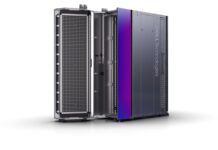In a time where we define our level of knowledge and access to internet connectivity in acronyms, it becomes more apparent (by simply watching conversations on community WhatsApp or Facebook groups) that some may not necessarily know or understand as much about technical acronyms used to describe basic home connectivity. The importance of understanding what these acronyms mean will ensure you’re receiving a) your best possible internet connection for you in your area, b) at the best speeds, c) using the best network, d) that offers the best support. More than this, understanding how the internet works will also help you troubleshoot your internet issues before needing to log a ticket.
So where to start? Supersonic, who has been incredibly active in the months of lockdown – both from an installation and service perspective help understand some of the basic terms used to connect:
FNO – Fibre Network Operator. FNO’s own the physical infrastructure (the teams who physically dig the trenches and lay the fibre optic cables outside or near your home). FNO’s are responsible to repair faults or issues affecting the transmission of data to your home.
ISP – Internet Service Providers. These are the companies that physically supply you your internet service – whether this be via ADSL, broadband or fibre.
FLTE – Fixed Long-Term Evolution or Fixed wireless broadband is the way of connecting to the internet using radio signals rather than cables. If you don’t have fibre in your area, FLTE is your best alternative for super-fast internet connectivity. The connection is fixed to a device (or modem) in your home and signal comes from the closest transmission tower (also called ground stations). Supersonic currently run their FLTE service off the MTN 4G ground stations that cover 95% of South Africa.
FIBRE – Internet connectivity via fibre optic cables that run underground – usually on the verges or pavements of suburbs that connect to an exchange. In South Africa at this stage, fibre connectivity has mostly been forecast to the regional metropoles.
ADSL – Asymmetric digital subscriber line (ADSL). This is a broadband connection via existing copper telephone lines with high data traffic compared to standard telephone lines. Providers have begun switching off their ADSL connections due to significant advancements in technology as well as the simple truth of not being able to consistently replace the cables.
Now that you know what the different types of connections are, let’s unpack other acronyms that can help you decipher between good Mbps speeds, Sync and Async behaviour and the difference between 30GB and 150GB packages.
Mbps – Megabits per second which is the measurement used to test an internet connections’ upload or download speed. Bits are measured in kilobits, megabits, megabytes and gigabits per second. The common unit of internet speed measurement is done in Mbps – megabits per second and South Africa’s global average – according to Cable.co.uk is at 6.38Mbps.
Upload speed – the speed at which data is uploaded from a device (in your home or office), to the internet. These speeds are almost always slower than download speeds
Download speed – the exact opposite of the above. Download speed determines the speed, measured in Mbps, at which data (or digital content) is downloaded from the internet to a device like a mobile phone, TV or computer.
Sync connection – refers to the speed at which you download data being equal to your upload speed i.e. 20/20 line. Connections that require data exchange at the same time are synchronous connections. Gamers or those working from home that need to conduct regular video conference meetings and the like would need a synchronous connection.
Async connection – refers to a line where the upload and download speeds differ i.e. 20/10 line. Phone updates, DSTV, Netflix and holiday entertainment content downloads can easily be scheduled using Night Owl or an asynchronous data connections.
Bandwidth – refers to the allocated amount of data that a user can receive via their connection which is usually measured in seconds – a 10Mbps connection as an example. To understand bandwidth, think about a sluice gate – if only one is open post heavy rains, the flow will be under significant pressure and would be limited. With numerous sluice gates flowing at the same time, aside from it looking amazing, there would be a consistent, less-pressured flow of water.
When deciding which service provider or data package to go with, your best option would be to first run a speedtest to check what type of connection speed your service provider is offering. These considerations will need to be based on the line purchased and the type of data needed to consume via the connection e.g. gaming, movie or series downloads, working from home etc.
For more information or check what type of line would be best for you, visit Supersonics’ website, Facebook, Twitter or Instagram pages
Provided by Supersonic




























